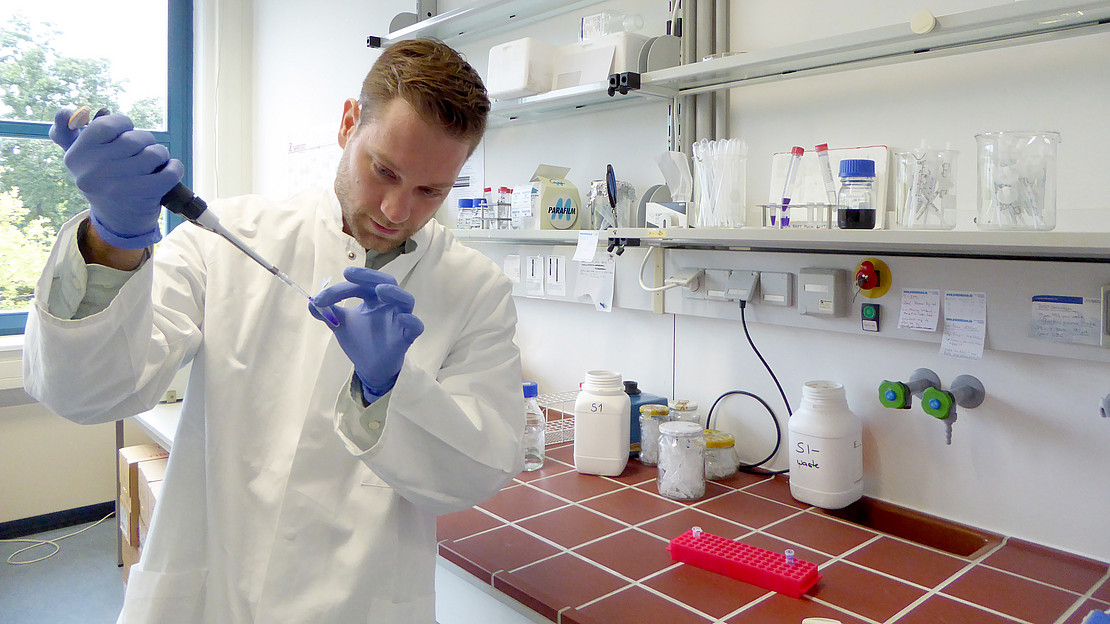This page contains automatically translated content.
Molecular causes of Parkinson's disease
 Image: Eva Krämer
Image: Eva KrämerParkinson's disease is the most common neurodegenerative disease after Alzheimer's disease. At least 10 percent of Parkinson's cases have genetic causes, as has been known for some years. Scientists around the world are working intensively to get to the bottom of this disease and thus possibly develop new drugs. A few years ago, our research group led by Prof. Dr. Friedrich W. Herberg also made a sensational contribution by discovering a molecular switch, so to speak, on an enzyme called LRRK2, which plays a central role in the development of Parkinson's disease. I would now like to follow up on this. The enzyme is particularly large and can be divided into seven different sections called domains. It happens that one domain of the enzyme is mutated and thus triggers Parkinson's because certain stimulus transmissions in neuronal cells no longer function.
My initial goal is to understand one of these domains by examining how the three-dimensional structure relates to the function of the protein. I want to find out how certain mutations affect the activity of the enzyme, and I am trying out a lot of things: I change the protein, for example, by cutting off a part. Fortunately, my research is made possible by a doctoral scholarship from the Otto Braun Fund, donated by B. Braun Melsungen AG. Our research group is also well networked internationally, especially through the Michael J. Fox Foundation for Parkinson Research. With our cooperation partners, we exchange not only findings but also, for example, biochemical tools. What I appreciate about my project is this networking; what I appreciate most, however, is how much imagination is required to investigate processes on tiny biomolecules. Especially in light of an aging society, I hope to contribute to a better understanding of this increasingly common disease.
This article appeared in publik 4/2018 (Dec. 18, 2018).